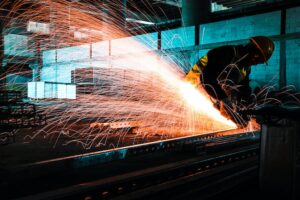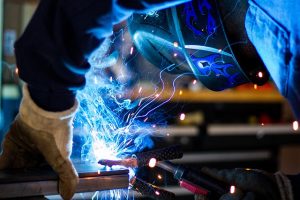Understanding The Basics of Stainless Steel Welding And Fabrication

Nevertheless, stainless steel still has an extremely valuable feature. These include resistances to different liquids, chemistry, or gas corrosion. This product’s great strength and longevity make it an important product in the market. In welding, stainless steel has likewise emerged as the preferred material. It can be difficult for some to find out how stainless steel welding and fabrication works. Understanding basic welding methods for steel according to professional welders in Wagga Wagga will be useful for your initial start. Welders must consider several things. Then you’ll be able to learn about welding stainless steel.
This article contains the 3 common methods used to weld stainless steel, tips on how to weld stainless steel safely, and the equipment and tools used by welders to weld this metal.
3 Common methods for stainless steel welding
The process of welding stainless steel depends on the thickness and finish of the material. There are many ways to weld stainless steel but most welders use only three. These are the following:
1. TIG Welding or Gas Tungsten Arc Welding
TIG (Tungsten Inert gas welding) is the most popular method of stainless steel welding. This is a great method for critical welding joints. This method is widely used in industries that require precise and fine welds.
This method generally uses argon-rich shielding gas, which is usually mixed with hydrogen, helium, and nitrogen. Argon gas cools down and protects the tungsten. It is often used and prevents oxidation. Argon gas also emits less smoke than other gases.
TIG welding differs from the other methods because it does not use a consumable electrode that melts into the weld. It uses a tungsten electrode, as the name implies. The gun creates a gas shield that is similar to MIG welding. Filler metal can be applied manually to the weld. Although TIG welding allows you more control over the welding process, it is also more difficult and requires more patience. This allows you to weld non-ferrous metals or alloys with greater control. Also, aluminum fabricators prefer this welding procedure because it produces fine and clean welds.
2. Resistance or Spot Welding
This is spot welding or seam welding, as the name implies. Spot welding is the most cost-effective method of welding. The equipment for resistance welding is versatile. It is ideal for small or large metal welding projects.
Resistance welding is a process that uses an electric current to melt and bond metal edges. This method is a good choice for low-melting metals. It is easy to modify it to avoid metal distortion.
3. MIG Welding or Gas Metal Arc Welding
This semi-automatic welding process provides durable bonding between two pieces of stainless metal, especially when done correctly.
A pulsed current supply is used for MIG welding. This will make reaching the corners of intricate stainless steel projects easier.
MIG welding is similar to Stick Welding. An electrode melts to perform the same function as the filler. MIG welding is different in that it uses an automatic feed system that automatically feeds a steel rod that has been coated with copper to the welding gun. This wire is then melted into the base metals by the arc, which acts as the filler. The process doesn’t require flux as the wire is shielded with an inert gas. This is also ejected from the gun. MIG welding is the fastest and easiest process of arc welding, but it can be time-consuming as you will need both a power supply and gas tanks to work. MIG welding is not recommended outside because of the possibility that the wind could blow the protective gases.
Which Stainless Steel Welding Process is Best?
TIG or Tungsten welding arc welding offers excellent strength, versatility, and long-term durability. The welded process has a low-temperature input and can work well on thin surfaces.
Welding stainless steel: Tips
Here are some tips to ensure safe and durable stainless steel welding.
1. Before welding, make sure you clean all surfaces of stainless steel.
Other metals and high-carbon steel can contaminate stainless steel. These metals can cause corrosion to stainless steel.
Cleaning the stainless steel surface will also strengthen the weld. Use a wire brush to clean stainless steel surfaces. This is because microscopic particles may be from other metals and can penetrate stainless steel surfaces while cleaning. It is worth considering specialized pickling and cleaning techniques to prevent future problems.
2. Get the right tools.
A good welder starts the process correctly every time. Before you do anything, check your equipment, wire supply, and the voltage of your welding machine. Extra wires, consumables, and gun tips are necessary in case of a need for a quick change.
3. Choose a filler material similar to the welded steel.
Choosing the right filler material is crucial to preserve stainless steel’s corrosion resistance. Consider the suffixes and grades of steel to help you choose the right one.
4. You should work in a well-ventilated area.
To provide sufficient ventilation for welders, working in an open garage is a good idea. Task-specific exhaust systems are available if there isn’t enough fresh air. To perform well, you need sufficient lighting.
5. Protect yourself with the proper personal protective equipment (PPE).
It is essential to use suitable personal protection when welding. This protects the welder from potentially dangerous incidents like sparks, burns, and radiation. It is a good safety practice to wear appropriate protective gear. Regulators also require it.
Equipment and tools used in welding stainless steel
Special tools and materials are required to weld stainless steel using the MIG method. These are the essential equipment you need for any type of welding job.
- A welding machine – is necessary for making solid and reliable stainless steel welds. It is important to search for parts like a welding gun and sample welding rod in a MIG welder.
- Welding machine – As mentioned, most welding machines come with a welder. The welding gun can be upgraded to provide better control and perform specific tasks.
- Gun Liner – protects your welding gun. It allows welders to switch between different types of metal wire to perform specific welding tasks.
- Wire feeder – This device is not needed if there is a lot to be welded or if you are working in a highly specialized area.
- Welding wire – Use the appropriate welding wire for stainless steel. To determine the right welding wire, you should inspect your welding machine or wire feeder.
- Cleaning brush – To prepare the workpiece for better and more durable welding, a metal scraping and cleaning brush is required.
- Shielding Gas – A combination of helium, carbon dioxide, and argon can be used to create Shielding Gas.
Conclusion
In conclusion, welding stainless steel can be done using various methods. The most popular method is welding with an arc, but other methods are also effective. Always wear a welding helmet and protective gear while welding Stainless steel to ensure safety.
If you need any help with your metal project, don’t hesitate to ask for help from the nearest welding shop.



